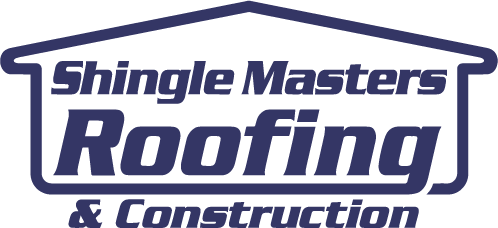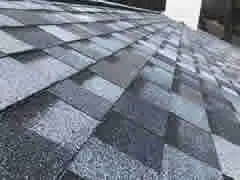What to Expect in a Professional Roof Inspection
What to Expect During a Professional Roof Inspection
Estimated reading time: 8 minutes
Key Takeaways
- A professional roof inspection evaluates shingles, flashing, gutters, and attic ventilation, with findings documented via photos and detailed notes.
- The process includes a ground-level survey, on-roof inspection, flashing and penetration checks, and an interior attic assessment for leaks and ventilation issues.
- In Riverview, Florida, common issues include algae streaking, sun-baked sealants, and wind-lifted shingles from seasonal storms.
- You’ll receive a written report with photos, a summary of findings, and clear recommendations for repair or replacement.
- Early detection prevents major structural damage and supports decisions for maintenance, insurance claims, or replacement planning.
Table of Contents
- What You Need to Know
- How a Professional Roof Inspection Works: A Step-by-Step Guide
- What Do Roof Inspections Cost?
- Local Considerations for Riverview, Florida
- Common Mistakes & Red Flags to Avoid
- Navigating Insurance & Storm Damage Claims
- Why Choose ShingleMasters for Your Roof Inspection?
- Glossary of Roofing Terms
- Schedule Your Free Inspection Today
- Sources
- Frequently Asked Questions
What You Need to Know About Roof Inspections
A professional roof inspection is a systematic, multi-point assessment of your roof’s health. An inspector evaluates all accessible components of your roofing system to identify signs of wear, damage, or potential failure points, providing you with a detailed report to guide maintenance, repair, or replacement decisions.
Your Pre-Inspection Checklist:
- Ensure the inspector has safe access to all areas, including yards and attic hatches.
- Secure pets indoors to prevent them from getting in the way or escaping.
- Have a copy of your homeowner’s insurance policy available, especially if the inspection is for storm damage.
- Note any specific leaks or concerns you’ve noticed inside the home.
- Prepare a list of questions you have for the inspector.
- If possible, locate any paperwork from previous roof work or warranties.
How a Professional Roof Inspection Works: A Step-by-Step Guide
Understanding what to expect during a professional roof inspection helps you partner with your contractor to protect your home. The process is thorough and designed to catch everything from obvious damage to subtle signs of future trouble.
Here’s how our certified inspectors at ShingleMasters evaluate your roof:
Tools & People
- Who: A trained and insured roofing inspector.
- Tools: A securely placed ladder, safety harness, high-resolution camera or drone, moisture meter, and tools for minor debris removal or temporary tarping if needed.
- Duration: 45 to 90 minutes, depending on the roof’s size and complexity.
Step 1: The Ground-Level Exterior Survey
The inspection starts on the ground. The inspector walks the perimeter of your home, looking at the rooflines, siding, and fascia for signs of sagging, water staining, or damage. They will check the condition of your gutters and downspouts, ensuring they are securely attached and free of blockages or granule buildup from shingles.
Step 2: The On-Roof Inspection
Next, the inspector safely accesses the roof surface. Here, they meticulously examine the primary roofing material (shingles, tiles, or metal panels). They look for cracked, curled, loose, or missing shingles. They will also check for granule loss on asphalt shingles, which indicates advanced aging and reduced protection.
Step 3: Flashing and Penetration Checks
The most common sources of roof leaks are penetrations. The inspector carefully checks the flashing—the metal strips that seal transitions—around chimneys, skylights, vents, and valleys. They will look for gaps, rust, or dried, cracked sealant that could allow water intrusion.
Step 4: Attic and Interior Inspection
What happens inside is just as important as what happens outside. The inspector will enter your attic to look for signs of water stains on the underside of the roof deck, wet insulation, or daylight shining through. They also assess your attic’s ventilation and insulation levels, as improper airflow can lead to moisture buildup and reduce your roof’s lifespan. A thermal camera or moisture meter may be used to detect hidden dampness.
Step 5: Documentation and Reporting
Throughout the process, the inspector takes dozens of photos to document their findings. Afterward, they compile this evidence into a comprehensive written report. This report details the roof’s current condition, highlights any areas of concern, and provides clear, prioritized recommendations for action.
Step 6: Review and Next Steps
The final step is reviewing the report with you. The inspector will explain their findings, answer your questions, and discuss potential solutions. This may include a simple repair plan, a maintenance schedule, or a full replacement estimate with transparent pricing for different material options.
What Do Roof Inspections Cost?
A standalone roof inspection from a certified professional can cost between $200 and $600, depending on your location and the roof’s size and complexity. However, most reputable roofing contractors, including ShingleMasters, offer a comprehensive roof inspection for free as part of the estimate process for repairs or replacement.
Understanding Roofing Warranties
Warranties are a critical factor but can be confusing. There are two main types you need to know.
- Material Warranty: This is provided by the shingle or tile manufacturer and covers defects in the roofing materials themselves. “Lifetime” warranties are common but often have specific limitations. For example, GAF defines “lifetime” as the period a single-family homeowner owns the property where the shingles are installed. The coverage may be prorated after an initial non-prorated period and may not be fully transferable.
- Workmanship Warranty: This is provided by your roofing contractor and covers errors in installation. A quality contractor will stand by their work for a set period, often ranging from 5 to 25 years or even a lifetime. This is arguably the more important warranty, as most roofing failures are due to improper installation, not material defects.
Always read the warranty documents carefully to understand what is covered, for how long, and what actions might void the coverage.
Common Roofing Material Comparison
| Material | Wind Rating (ASTM D7158) | Impact Class (UL 2218) | Typical Warranty | Typical Cost Range (per sq. ft. installed) |
|---|---|---|---|---|
| Architectural Asphalt Shingles | Class H (150 mph) | Class 1–4 | 25–50 Years (Limited Lifetime) | $5.50 – $9.50 |
| Metal (Standing Seam) | 140+ mph | Class 4 | 30–50 Years | $9.00 – $20.00+ |
| Concrete/Clay Tile | 125+ mph | Class 3–4 | 50 Years – Limited Lifetime | $12.00 – $25.00+ |
Sources: GAF, UL Solutions, Florida Building Code. Costs are national averages for 2023-2024 and can vary significantly based on location, contractor, and project complexity. Verify all specs with the manufacturer.
Local Considerations for Riverview, Florida
Roofing in Riverview and greater Hillsborough County requires special attention to our unique climate. While not in a High-Velocity Hurricane Zone (HVHZ) like Miami-Dade, our homes must still withstand strong winds, intense sun, and heavy rain as specified by the Florida Building Code.
Here are three common issues our inspectors find in the Riverview area:
- Algae Streaking (Gloeocapsa magma): Those dark black or blue-green streaks you see on many local roofs are caused by a type of airborne algae. While mostly a cosmetic issue, it can degrade shingles over time. Many modern shingles come with algae-resistant technology, such as copper-infused granules, which is a wise investment in our humid climate.
- Sun-Baked and Cracked Sealant: The relentless Florida sun and high UV exposure are brutal on roof sealants. The caulk and other sealing compounds used around flashings and vents can dry out, shrink, and crack, creating a direct path for water to enter your home during our frequent rainstorms.
- Wind-Lifted Shingles: Even in non-hurricane conditions, strong thunderstorms can lift and crease shingles, breaking the sealant strip on their underside. Once this seal is broken, the shingle is vulnerable to being torn off in the next storm, leaving your roof deck exposed. According to the Florida Building Code, roofing in our area must meet specific wind load requirements to prevent this.
All roofing work in Hillsborough County requires a permit and must be inspected by a county official to ensure it complies with the latest building codes. You can verify a contractor’s license and check permit requirements on the Hillsborough County website.
Common Mistakes & Red Flags to Avoid
A bad roofing decision can lead to years of problems. Watch out for these red flags and avoid common mistakes.
- Do not hire “storm chasers.” These are out-of-town contractors who appear after a major storm, knock on doors, and offer deals that seem too good to be true. They often perform subpar work and disappear when warranty issues arise.
- Do not sign a contract under pressure. A reputable inspector will give you time to review their findings and estimate. High-pressure sales tactics are a major red flag.
- Do not skip the attic inspection. An inspector who only looks at the roof from the outside is only doing half the job. The attic provides crucial evidence of leaks, ventilation problems, and structural issues.
- Do not rely on a DIY inspection for insurance claims. While it’s good to take your own photos, insurance carriers require a detailed assessment from a qualified professional to process a claim for roof damage.
- Do not ignore small issues. A single missing shingle or a small leak can seem minor, but it can lead to thousands of dollars in hidden water damage, rot, and mold if left unaddressed.
Navigating Insurance & Storm Damage Claims
If a storm has damaged your roof, a professional inspection is the first step in the insurance claim process. The inspector’s report serves as critical third-party evidence for your insurance carrier.
The claims process generally follows this path:
- Initial Inspection & Damage Documentation: Call a trusted roofer like ShingleMasters to perform an emergency inspection and document all damage with photos. If necessary, they can perform temporary repairs to prevent further water intrusion.
- Verify Your Insurance Coverage: Review your homeowner’s policy to understand your deductible, coverage limits, and any specific exclusions.
- File Your Claim: Contact your insurance carrier to open a claim. Provide them with the date of the storm and the initial findings from your roofer.
- Adjuster Meeting: Your carrier will send their own adjuster to inspect the roof. It is highly recommended to have your roofing contractor present during this meeting to ensure all damage is identified and fairly assessed.
- Review the Scope of Work: The adjuster will provide a “scope of work” detailing the repairs they have approved. Your contractor will compare this with their own assessment. If there are discrepancies, they can submit a supplement with evidence to argue for additional coverage.
- Repairs Begin: Once the scope and cost are agreed upon, you sign a contract with your roofer, and work begins.
- Recoverable Depreciation: Most policies are “Actual Cash Value” (ACV) and will initially pay for the depreciated value of your roof. Once repairs are complete and you provide a final invoice, the carrier releases the remaining funds, known as the “Recoverable Depreciation.”
Your Insurance Verification Checklist
Before filing a claim, review your policy declarations page for these key items:
- Your policy number.
- The effective dates of your coverage.
- Your deductible amount for wind and hail damage (it may be a percentage).
- Whether your policy is for Replacement Cost Value (RCV) or Actual Cash Value (ACV).
- Any exclusions or limitations for roof coverage.
- Deadlines for filing a claim after a storm event.
Disclaimer: This information is for educational purposes only and is not legal or insurance advice. Always verify coverage directly with your insurance carrier.
Why Choose ShingleMasters for Your Roof Inspection?
When you schedule an inspection with ShingleMasters Roofing, you get more than just a quick look. You get a partner dedicated to protecting your home and your investment. We build our process around transparency, safety, and expertise.
We understand what to expect during a professional roof inspection because we set the standard. Our inspectors are not just salespeople; they are trained professionals who provide a thorough, honest assessment of your roof’s condition.
- Manufacturer-Certified Installers: Our teams are trained and certified by leading manufacturers, ensuring your roof is installed to the highest standards and that your warranties are valid.
- Commitment to Safety: We are fully licensed, insured, and adhere to strict OSHA safety protocols on every job site to protect our crew and your property.
- Detailed, Photo-Based Reporting: You won’t just be told you have a problem; you’ll be shown exactly what we see with high-resolution photos and clear explanations.
- Transparent Pricing: We provide detailed, itemized estimates with no hidden fees. We’ll walk you through different material and warranty options to find a solution that fits your budget.
- Pristine Cleanup: We respect your property. Our teams use magnetic sweepers and perform a final walkthrough to ensure your yard is as clean as we found it.
- Flexible Financing Options: We offer a range of financing solutions to help make your necessary roofing project affordable.
From routine maintenance to full storm damage restoration, our team is here to help—without pressure and with full transparency.
Explore our roof replacement services or learn more about our hail and wind damage repair process.
Glossary of Roofing Terms
- Underlayment: A water-resistant barrier installed directly on the roof deck before the shingles are laid. It serves as a secondary layer of protection against moisture.
- Ridge Vent: An exhaust vent installed along the peak (ridge) of a roof that allows warm, moist air to escape from the attic, crucial for proper ventilation.
- Class 4 Impact Rating: The highest rating for roofing materials according to the UL 2218 standard. Class 4 materials are tested to withstand the impact of a 2-inch steel ball dropped from 20 feet without splitting or tearing.
- Ice & Water Shield: A specialized, self-adhering underlayment applied at eaves, in valleys, and around penetrations to protect against leaks from ice dams and wind-driven rain.
- Flashing: Pieces of metal or other impervious material installed to prevent the passage of water into a structure from a joint or as part of a weather-resistant barrier system.
- O&P (Overhead and Profit): A line item sometimes included in insurance estimates to cover a general contractor’s business operating costs and profit margin, typically when a project requires coordinating multiple trades (e.g., roofing, gutters, siding).
Schedule Your Free Inspection Today
Your roof works 24/7 to protect your family and your home. Don’t wait for a small problem to become a catastrophe. Understanding what to expect during a professional roof inspection is the first step toward peace of mind. Let our certified experts provide you with a comprehensive, no-pressure assessment.
If you only do 3 things:
- Walk around your house and look for any visible signs of damage from the ground.
- Check your interior ceilings and attic for any water stains.
- Claim your free, professional storm damage assessment from ShingleMasters to get a clear, honest picture of your roof’s health.
Sources
- Standard Limited Warranty for GAF Shingles — GAF
- Roofing Impact Resistance — UL Solutions
- Florida Building Code, 8th Edition (2023) — Florida Building Commission
- Building & Development: Roofing — Hillsborough County, Florida
- What Causes Black Streaks on a Roof? — Owens Corning
- How to File a Homeowners Insurance Claim — Insurance Information Institute
Frequently Asked Questions
How long does a professional roof inspection take?
A thorough roof inspection typically takes between 45 and 90 minutes. This can vary depending on the size of your home, the complexity of the roof design (e.g., multiple levels, steep pitch), and whether the inspector needs to spend significant time in the attic.
Can I perform my own roof inspection?
While homeowners can and should spot obvious issues from the ground like missing shingles, a DIY inspection is not a substitute for a professional one. Certified inspectors are trained to identify subtle signs of damage, understand building codes, and can safely navigate a roof, which can be extremely dangerous for an untrained person.
How often should I get my roof inspected?
Most experts recommend a professional roof inspection at least once every two years. You should also schedule an inspection immediately after any major weather event, such as a hurricane, hailstorm, or high-wind event, even if you don’t see any obvious damage from the ground.
Is a roof inspection free?
Many roofing contractors, including ShingleMasters, offer a free, no-obligation roof inspection as part of the process of providing an estimate for repairs or replacement. A standalone inspection requested for real estate or insurance purposes, without associated repair work, may come with a fee.
What’s the difference between a roof certification and a roof inspection?
A roof inspection is a detailed assessment of the roof’s current condition at a single point in time. A roof certification is a document, often requested during a home sale, where a roofing company states that the roof is free of defects and should be expected to last for a specific period (e.g., 2-5 years). A certification is typically issued only after a thorough inspection and any necessary repairs are completed.
Can my roof be repaired, or does it need to be replaced?
The decision to repair or replace depends on the age of the roof, the extent of the damage, and the type of roofing material. If the damage is localized (e.g., a few missing shingles) and the rest of the roof is in good condition, a repair is often sufficient. However, if the roof is nearing the end of its lifespan or the damage is widespread, a replacement is usually the more cost-effective long-term solution.



